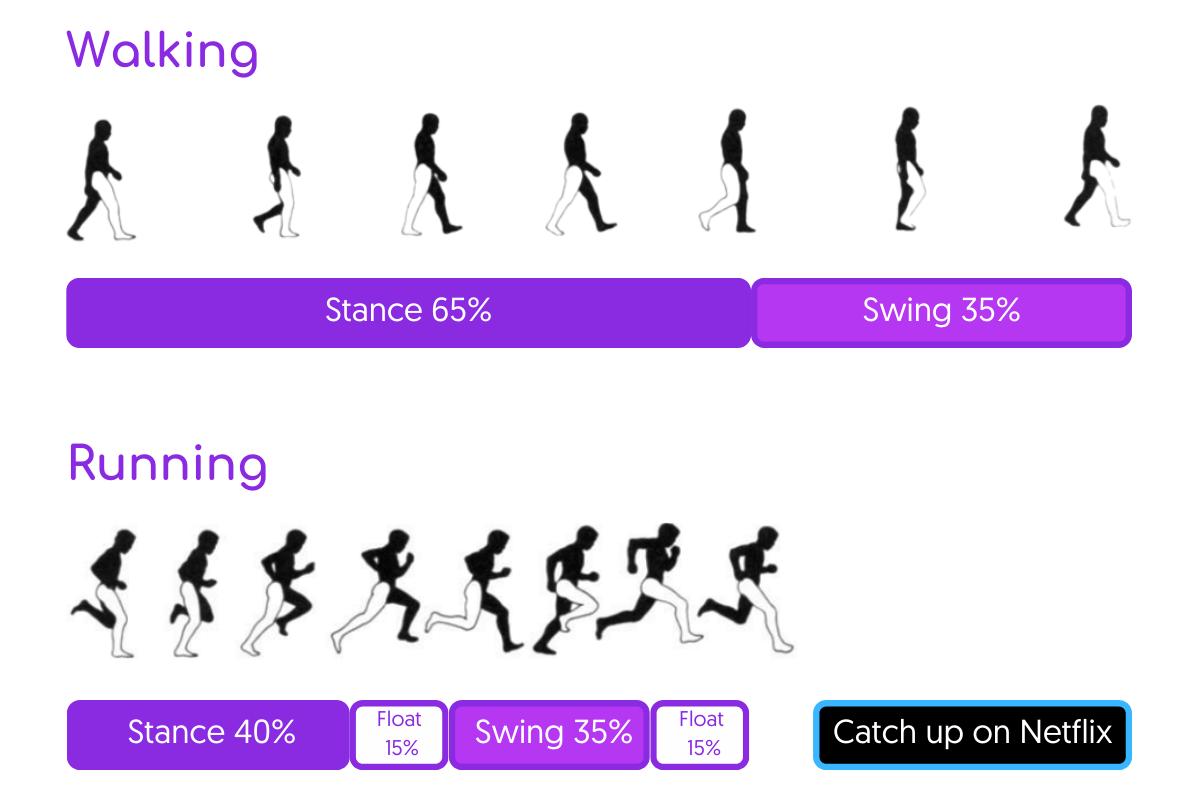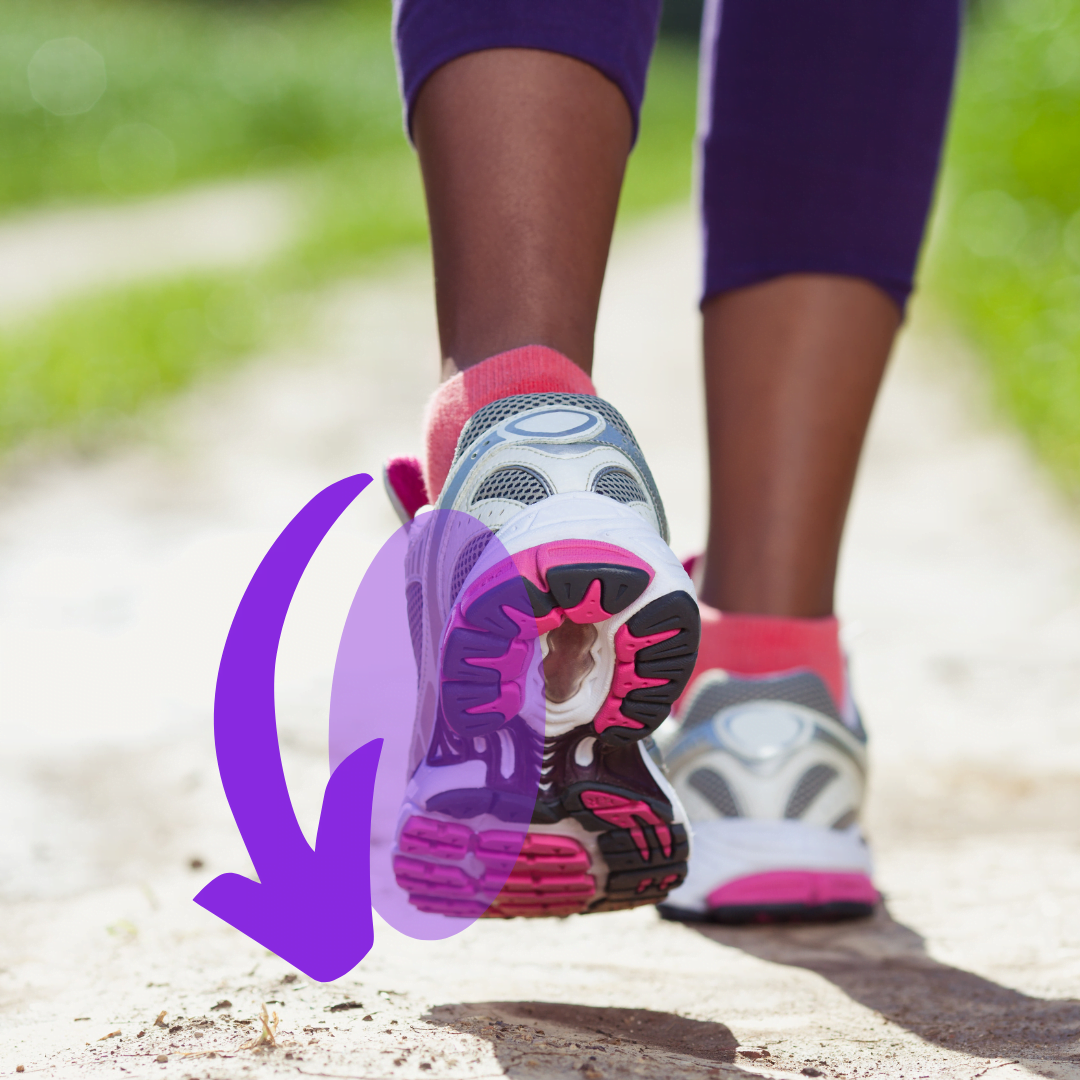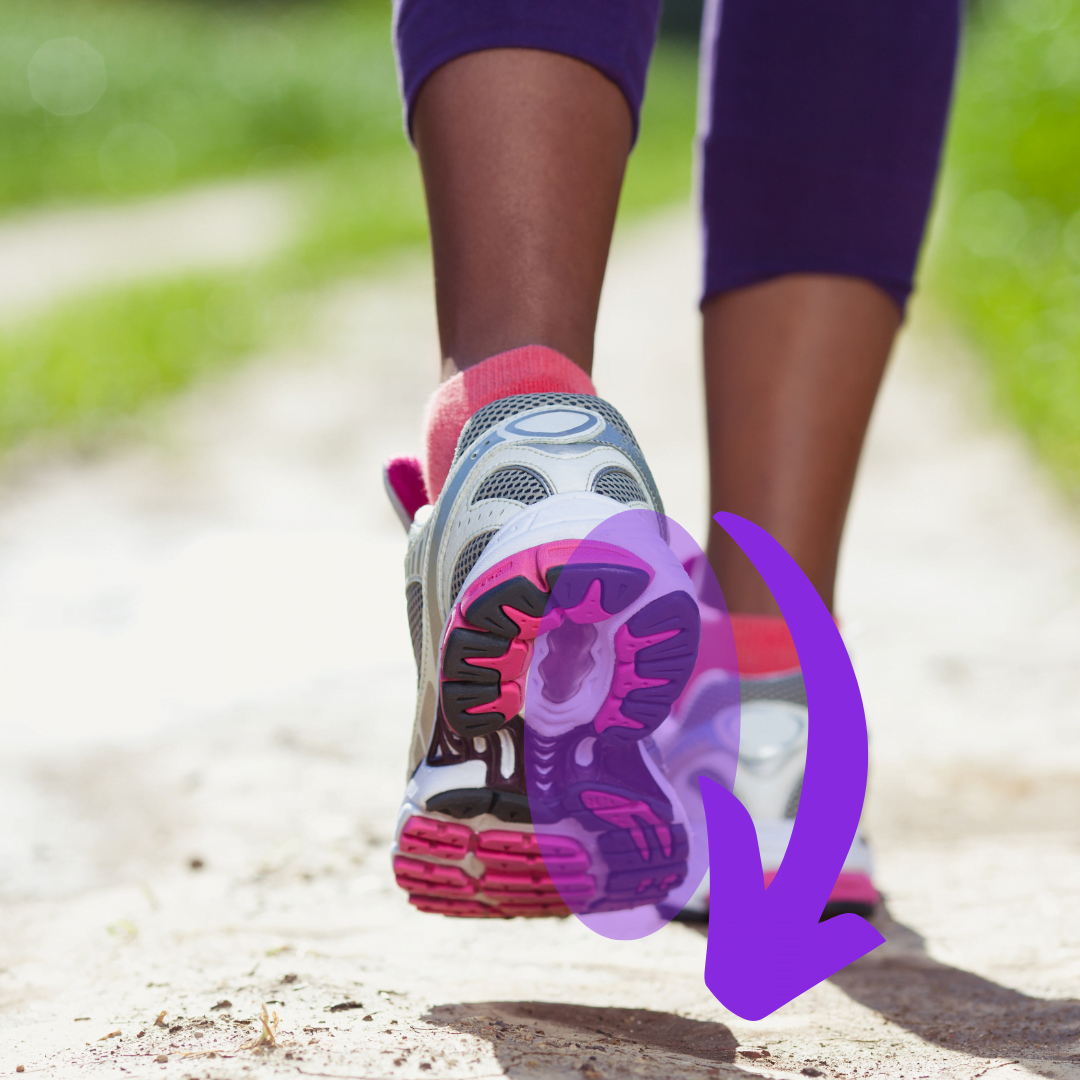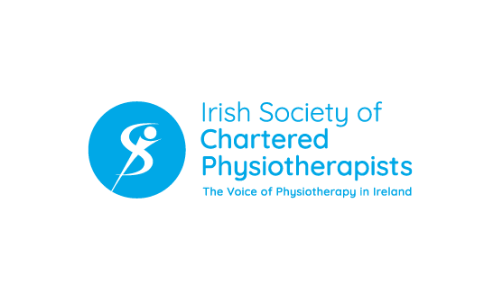Running & Gait Analysis
What is Running and Gait Analysis?
Running and Gait Analysis is commonly discussed as a single concept, although both components are different. Gait is the way in which we move our limbs in a pattern to walk or run. Human gaits are classified as either natural (one that we use instinctively) or trained (a learned and/or practiced gait). When walking, you always have one or both feet in contact with the ground during the gait cycle, whereas in running you have a flight or “float” phase where both feet are off the ground, and you never have both feet in contact with the ground simultaneously. The running gait cycle has two main phases, the Stance and the Swing. The length of a cycle begins when your foot hits the ground and ends when the same foot makes contact with the ground once more.
Running is an extremely popular sport around the world, and while it is a great way of getting and keeping fit and healthy, it comes with a high risk of injury. Up to 80% of people who run regularly, will experience more than one injury each year. Out of all the types of aerobic exercises, running is associated with the highest prevalence of overuse injuries, with the majority of these injuries occurring in the lower limbs. But we love running too much don’t we?
The importance of Gait Analysis
Gait analysis allows you to identify your running style. This knowledge can then be used to make changes to your technique if you’re experiencing pain or discomfort. Sometimes when running, large muscle groups such as the Hamstrings, Glutes and Quads do less of the work than expected. In their place, smaller stabilising muscles and tendons have to compensate. This isn’t necessarily a bad thing, but if enough stress is applied to a weak area repeatedly over time, you can begin to pick up injuries and niggles. Improving your running technique can also lead to more efficient movement, allowing you to run faster and perform competitively to a higher standard. Gait Analysis is subsequently really effective when you have a goal or training outcome in mind. Goals will always differ depending on your experience level.
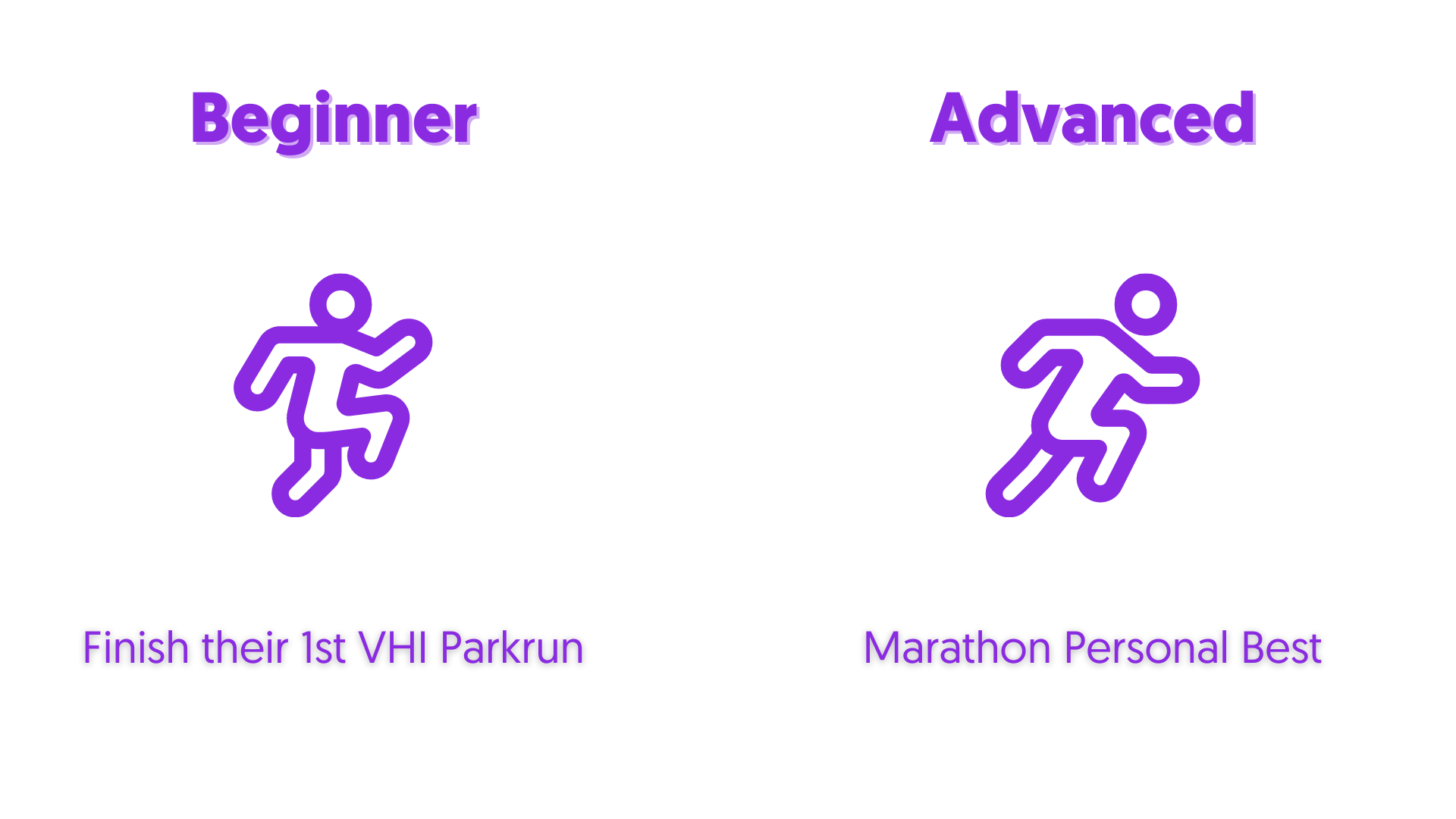
Many people argue that the primary reason for Gait Analysis is to measure your degree of Pronation. Pronation is the term used to describe the way in which your foot rolls when you walk and run. There are three categories listed below that we all seemingly fall into when it comes to pronation. It’s important to remember how unique we all are as people when categories or classifications are concerned.
Supinator
The outer heel hits the ground first with little or no inward pronation (rolling). This puts pressure on the smaller toes when pushing off and requires your lower leg to absorb shock at impact.
Neutral
The outer heel hits the ground first and then rolls inward to absorb shock evenly across the foot. There is equal pressure across the toes when pushing off.
Overpronator
The outer heel hits the ground first and then pronates (rolls) inward, where weight is transferred to the edge rather than the ball of the foot. This puts most of the pressure on the big toe and second toe.
The word “Pronation” has arguably become demonised. This roll acts as a natural shock absorber for the leg and body, optimally distributing the force of the impact of the heel hitting the ground. It is very easy to see problems in ourselves and feel anxious. Runners can easily purchase shoes or change their technique, so that they limit their pronation, when this ultimately becomes the source or reason for an injury down the line.
Well what about Forefront and Mid-foot Running then? Yes, you could decide to adopt a running technique that would eliminate Heel Striking (landing on your heel). However, it goes back to you and your personal situation. Elite Runners will forefoot strike because they need to spend less time on the ground to increase speed. However, this will place more load on the achilles. Perhaps you have a history of knee pain and you’re getting back into running? It’s very important you don’t replace one injury with another.
What to expect
Time alone will see many injuries resolve themselves, but if your gait style continues to aggravate your injury, it may be time to book an assessment with a Chartered Physiotherapist. Our analysis will give you more information about your Gait and Running Technique and how your style of running may be contributing to persistent injury. Your Exercise Plan will include practical running drills targeted to improving your running style, as well as strengthening or flexibility work. We will address things such as ground striking, as mentioned above and we can also cover aspects such as Running Cadence. Our goal is to have you running, without pain, as quickly as possible (excuse the pun).
It is crucial to avoid making multiple changes at once and it’s just as important to gauge whether the changes have actually improved your running. We know it can be difficult to make changes to your form. Start with small changes, focusing on making one adjustment at a time. With a little bit of practice and effort, you’ll be on your way to better endurance and less pain.
What about Orthotics and other Footwear?
Research published within the past decade has shown that there is little to no benefit in wearing stability or motion control shoes versus neutral shoes. In fact, some experts contend that runners who rely solely on shoe type to fix their injuries are likely making things worse. Many runners too often rely on the “perfect pair” of running shoes to address their injuries. New runners and those prone to injury would be better served by spending some time with a running technique specialist to get their form down, and then find the shoe that’s right for them.
“People are often prescribed shoes based on a trend, their arch height, or amount of pronation, but the research just doesn’t bear it out,” It’s the runner’s mechanics, not the type of shoe on his or her feet, that cause or prevent injury. Walker notes that for some runners with specific injuries, a gradual progression from one type of shoe to another can have favourable results, but only if overall running mechanics are modified in conjunction with the shoe change. Runners should avoid switching to a drastically different type of shoe and running the same number of miles with the same running form. He explains that your feet should be allowed to move the way they naturally want to, rather than be forced into a so-called “normal” position.
There are studies that support the use of orthotics for treating foot and ankle problems. However, many of them stress that the orthotic must be well-fitting and worn correctly. Orthotics can be a part of a comprehensive treatment plan to help those who have foot and ankle concerns. The bottom line is that they are not for everyone, and may create an expense for those without insurance coverage. If your doctor recommends an orthotic or orthotics, it’s best to ask questions about what kind of results you can expect from routine wear and seek out an industry leading provider.
Claim back your session on your Health Insurance!
Vhi
You can claim back your Physiotherapy session cost with Vhi’s “Snap & Send”.

Laya Healthcare
Along with other benefits, the Laya App enables you to claim on your Physio.
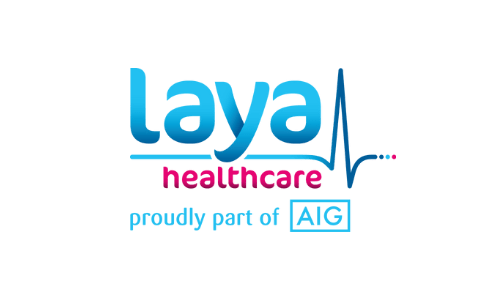
Irish Life Health
Log into your Account Online to make your claim with Irish Life. A member app is available too.

Questions?
What are your prices?
All pricing can be found on our Booking Page here.
Do I need to go to my GP first?
No. You do not require a referral to book an appointment with us.
How many sessions will I need?
You can accomplish a lot in just a single session. Following up will provide a lot of value but we can also do that over the phone. It really depends on the person and situation.
What should I wear to my appointment?
It is best to wear shorts if the issue is your lower body and a T-shirt or Singlet if the issue is with your upper body. Bring along your Running Shoes!
